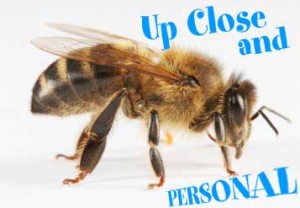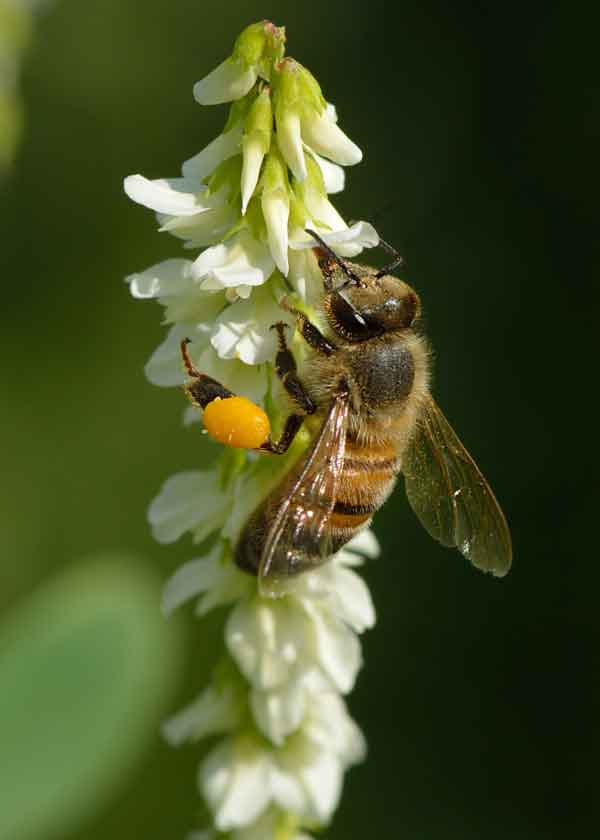[vc_row css=”.vc_custom_1456424341049{background-color: #0099ff !important;}”][vc_column width=”1/6″][vc_single_image image=”4992″ onclick=”custom_link” link=”https://kidsgrowingstrong.org”][/vc_column][vc_column width=”1/6″][vc_single_image image=”4994″ onclick=”custom_link” link=”https://kidsgrowingstrong.org/we-love-plants/”][/vc_column][vc_column width=”1/6″][vc_single_image image=”4998″ onclick=”custom_link” link=”https://kidsgrowingstrong.org/Energy”][/vc_column][vc_column width=”1/6″][vc_single_image image=”4996″ onclick=”custom_link” link=”https://kidsgrowingstrong.org/GoodGuys”][/vc_column][vc_column width=”1/6″][vc_single_image image=”5001″ onclick=”custom_link” link=”https://kidsgrowingstrong.org/garden-works/”][/vc_column][vc_column width=”1/6″][vc_single_image image=”5002″ onclick=”custom_link” link=”https://kidsgrowingstrong.org/healthy-eating”][/vc_column][/vc_row][vc_row][vc_column][vcex_spacing][vc_single_image image=”5784″ alignment=”center”][vcex_spacing][vc_row_inner][vc_column_inner width=”1/6″][/vc_column_inner][vc_column_inner width=”2/3″][vc_column_text css=”.vc_custom_1465707812410{padding-right: 50px !important;padding-left: 50px !important;}”]
Not all flying insects with black and yellow stripes are bees. And… not all bees have black and yellow stripes.
[/vc_column_text][/vc_column_inner][vc_column_inner width=”1/6″][/vc_column_inner][/vc_row_inner][vc_row_inner css=”.vc_custom_1465703572990{padding-right: 30px !important;padding-left: 30px !important;}”][vc_column_inner][vc_column_text]
 [/vc_column_text][/vc_column_inner][/vc_row_inner][vc_row_inner][vc_column_inner width=”1/6″][/vc_column_inner][vc_column_inner width=”2/3″][vc_column_text css=”.vc_custom_1465704351531{padding-right: 50px !important;padding-left: 50px !important;}”] There are about 3,500 kinds (species) of bees in North America and they do not all look alike. Many bees do have stripes, but some look a lot like flies and others are shiny blue or green. Bees also come in many different sizes. [/vc_column_text][/vc_column_inner][vc_column_inner width=”1/6″][/vc_column_inner][/vc_row_inner][/vc_column][/vc_row][vc_row][vc_column][vcex_spacing size=”50px”][vc_single_image image=”5027″][vcex_spacing size=”20px”][/vc_column][/vc_row][vc_row][vc_column width=”1/6″][/vc_column][vc_column width=”2/3″ css=”.vc_custom_1465712778781{padding-right: 20px !important;padding-left: 20px !important;}”][vc_single_image image=”5454″ alignment=”center”][vcex_spacing size=”20px”][vc_column_text css=”.vc_custom_1465710377640{padding-left: 20px !important;}”]
[/vc_column_text][/vc_column_inner][/vc_row_inner][vc_row_inner][vc_column_inner width=”1/6″][/vc_column_inner][vc_column_inner width=”2/3″][vc_column_text css=”.vc_custom_1465704351531{padding-right: 50px !important;padding-left: 50px !important;}”] There are about 3,500 kinds (species) of bees in North America and they do not all look alike. Many bees do have stripes, but some look a lot like flies and others are shiny blue or green. Bees also come in many different sizes. [/vc_column_text][/vc_column_inner][vc_column_inner width=”1/6″][/vc_column_inner][/vc_row_inner][/vc_column][/vc_row][vc_row][vc_column][vcex_spacing size=”50px”][vc_single_image image=”5027″][vcex_spacing size=”20px”][/vc_column][/vc_row][vc_row][vc_column width=”1/6″][/vc_column][vc_column width=”2/3″ css=”.vc_custom_1465712778781{padding-right: 20px !important;padding-left: 20px !important;}”][vc_single_image image=”5454″ alignment=”center”][vcex_spacing size=”20px”][vc_column_text css=”.vc_custom_1465710377640{padding-left: 20px !important;}”] 
 [/vc_column_text][vcex_spacing size=”20px”][vc_column_text css=”.vc_custom_1479772438841{padding-right: 90px !important;padding-left: 40px !important;}”]
[/vc_column_text][vcex_spacing size=”20px”][vc_column_text css=”.vc_custom_1479772438841{padding-right: 90px !important;padding-left: 40px !important;}”]
Just go outside to your garden or park and you will see one of these multi-talented females flying (yes, she can do that too!) doing another of her jobs, helping to provide you with food and flowers while she gathers food for her community (hive). You will be looking at a honeybee. The honey bee is the only insect that produces food eaten by man. Honey is the only food that includes all the substances necessary to sustain life, including enzymes, vitamins, minerals, and water. Read more about honey bees on the “Fairfax County Public School” website.
 Click here to download the template to make a Bee Mask.
Click here to download the template to make a Bee Mask.

[/vc_column_text][vcex_spacing size=”20px”][vc_single_image image=”6876″ alignment=”center”][vcex_spacing size=”20px”][vc_column_text css=”.vc_custom_1465712921348{padding-right: 20px !important;padding-left: 20px !important;}”] Honeybees live within large groups called colonies. They use caves, rock cavities and hollow trees as natural nesting sites. The inside structure is a densely packed group of hexagonal cells made of beeswax, called a honeycomb. The bees use the cells to store food (honey and pollen) and to house eggs, larvae, and pupae.
A TYPICAL HONEYBEE COLOY MAY HAVE:
• 6,000 eggs from which new larvae will hatch
• 9,000 hungry larvae needing food
• 20,000 older larvae and pupae in sealed cells, needing to be kept warm
• 1 queen
• Several hundred drones
• Thousands of very busy workers 

 WORKERS The worker bees are female bees who normally do not lay egss. They live for about 6 weeks. Their role in the hive makes it a Busy Bee Factory. Worker bees are responsible for every job in the hive except laying eggs. “A woman’s work never ends” certainly applies to female bees. Worker bees begin life as a hive nurse who cleans and caps cells, feeds the drones, queen and brood. As they get older they store and receive nectar from other workers, packpollen, build honeycomb and keep the hive clean. Later they become honey ripeners and hive guards. Finally they become foragers searching for and collecting nectar, pollen and water for the colony.
WORKERS The worker bees are female bees who normally do not lay egss. They live for about 6 weeks. Their role in the hive makes it a Busy Bee Factory. Worker bees are responsible for every job in the hive except laying eggs. “A woman’s work never ends” certainly applies to female bees. Worker bees begin life as a hive nurse who cleans and caps cells, feeds the drones, queen and brood. As they get older they store and receive nectar from other workers, packpollen, build honeycomb and keep the hive clean. Later they become honey ripeners and hive guards. Finally they become foragers searching for and collecting nectar, pollen and water for the colony.
[/vc_column_text][vcex_spacing size=”20px”][vc_single_image image=”6849″ alignment=”center”][vcex_spacing size=”10px”][vc_separator color=”custom” accent_color=”#fcc223″][vcex_spacing size=”20px”][vc_column_text css=”.vc_custom_1465712363502{padding-right: 20px !important;padding-left: 20px !important;}”]
QUEEN
The queen is largest bee and each hive has only one. Queens become queens only because as eggs they had the good fortune of being laid in cells specifically designated for raising queens. Then, they are fed more “royal jelly” (which contains more honey and pollen than the “larval jelly” that is eaten by workers and drones), allowing them to grow larger than other female bees. The queens sole purpose is to lay eggs. The queen bee only has one mating period. During this period she leaves the hive and will mate with 7 to 10 drones. She then returns to her hive and begins to lay her eggs. The queen can lay up to 2,000 eggs a day in the spring. The queen bee lives for 2 to 4 years. [/vc_column_text][vcex_spacing size=”20px”][vc_single_image image=”6853″ alignment=”center”][vcex_spacing size=”10px”][vc_separator color=”custom” accent_color=”#fcc223″][vcex_spacing size=”20px”][vc_column_text css=”.vc_custom_1465712603309{padding-right: 20px !important;padding-left: 20px !important;}”]
DRONES
The drones are the male bees. There are 100 female worker bees for every male drone bee. They are shorter than the queen and have larger eyes and antennae than all the females. The larger eyes and antennae help it find the queen during her mating flight. Drones are incapable of feeding themselves or foraging for food and they lack stingers. A male drone has only one purpose in life: to mate with the queen. The drone dies instantly after it mates with the queen. [/vc_column_text][vcex_spacing size=”20px”][vc_single_image image=”6850″ alignment=”center”][vcex_spacing size=”40px”][/vc_column][vc_column width=”1/6″][/vc_column][/vc_row][vc_row][vc_column][vcex_spacing][vc_single_image image=”5027″][vcex_spacing][vc_single_image image=”5465″ alignment=”center” css=”.vc_custom_1457933449920{padding-left: 60px !important;}”][vcex_spacing][vc_row_inner][vc_column_inner width=”1/6″][/vc_column_inner][vc_column_inner width=”2/3″][vc_column_text css=”.vc_custom_1465706915021{padding-top: 20px !important;padding-right: 120px !important;padding-bottom: 30px !important;padding-left: 60px !important;}”] Try to imagine our modern world without apples, pears, citrus fruits, carrots, grapes, olives, tomatoes, and almonds. Then try to imagine our California wildlands devoid of beautiful spring wild flowers. California native bees are very important to food crops grown in California. [/vc_column_text][vcex_spacing][vc_single_image image=”6868″ alignment=”center” onclick=”custom_link” img_link_target=”_blank” link=”https://www.pinterest.com/beesfreeinc/”][vcex_spacing][/vc_column_inner][vc_column_inner width=”1/6″][/vc_column_inner][/vc_row_inner][/vc_column][/vc_row][vc_row css=”.vc_custom_1456424354142{background-color: #0099ff !important;}”][vc_column][vc_column_text css=”.vc_custom_1465706831748{padding-top: 20px !important;padding-right: 120px !important;padding-bottom: 30px !important;padding-left: 60px !important;}”]  There are one thousand species of California native bees, 26 of these are bumblebees but most of the rest are solitary bees that do not live in a hive. Native Bees are the stars that play an important, but sometimes invisible role in our everyday lives. The Urban Bee Lab at at the University of California, Berkeley, has been working since 1987 on documenting bee diversity. Visit their site for more information. [/vc_column_text][vcex_spacing][vc_single_image image=”5027″][vcex_spacing][vc_single_image image=”6872″ alignment=”center” onclick=”custom_link” img_link_target=”_blank” link=”https://www.pinterest.com/beesfreeinc/”][/vc_column][/vc_row]
There are one thousand species of California native bees, 26 of these are bumblebees but most of the rest are solitary bees that do not live in a hive. Native Bees are the stars that play an important, but sometimes invisible role in our everyday lives. The Urban Bee Lab at at the University of California, Berkeley, has been working since 1987 on documenting bee diversity. Visit their site for more information. [/vc_column_text][vcex_spacing][vc_single_image image=”5027″][vcex_spacing][vc_single_image image=”6872″ alignment=”center” onclick=”custom_link” img_link_target=”_blank” link=”https://www.pinterest.com/beesfreeinc/”][/vc_column][/vc_row]

